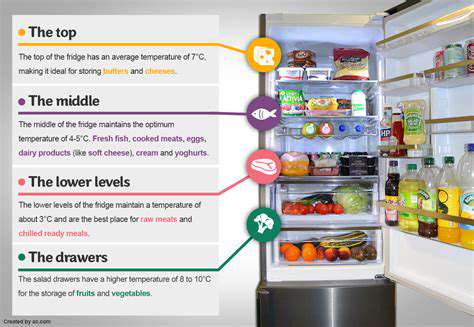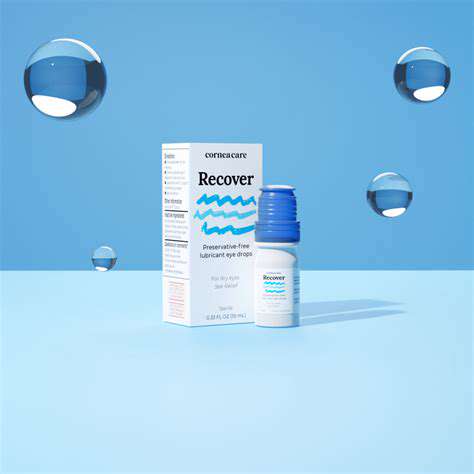Safely Defrosting Food: Best Practices to Prevent Bacteria
There are several safe methods for defrosting food, including refrigeration, cold water, and the microwave. Refrigeration is generally the safest method as it keeps the food consistently below the danger zone temperature. It takes longer, but it's the most reliable way to prevent bacterial growth.
Using cold running water is another effective method. Submerge the food in a leak-proof container with cold running water, changing the water every 30 minutes to maintain its coldness. This method is faster than refrigeration but requires careful monitoring to ensure the food remains consistently below the danger zone. Always ensure the food is completely thawed before consuming or cooking.
Factors Affecting Defrosting Time and Safety
The size and thickness of the food item significantly impact the defrosting time. Larger cuts of meat or frozen meals will take longer to defrost than smaller items, regardless of the method used. Understanding these factors is vital for planning and preventing potential issues. Consider the defrosting method and the time needed to ensure thorough defrosting without compromising food safety.
The type of food also plays a role in the optimal defrosting method and time. Different foods may require varying defrosting times and temperatures to maintain their quality and prevent the growth of harmful bacteria. This awareness of the specific needs of each food item will lead to more effective and safe defrosting practices.
Proper Handling and Storage After Defrosting
Once the food is completely defrosted, it's crucial to handle it hygienically. Use separate utensils and cutting boards for defrosted food to avoid cross-contamination with raw meat or other potentially contaminated items. Thoroughly wash all surfaces that came into contact with the defrosted food. Remember to cook the food to a safe internal temperature to eliminate any remaining bacteria.
Proper storage is essential to maintain food safety after defrosting. Store defrosted food in the refrigerator within one or two hours to prevent bacterial growth and maintain quality. Ensure the food is covered to prevent contamination and maintain its freshness. Following these steps ensures the safety and quality of the defrosted food.

Thawing in the Sink: Don'ts and Dos

Preventing Water Damage
Avoiding water damage in your sink area is crucial for maintaining a healthy and safe environment. Ignoring potential leaks can lead to costly repairs and significant inconvenience, so proactive measures are essential. Regular checks for drips, leaks, or unusual water buildup are crucial to prevent water damage from spreading to other parts of your home. Failing to address these issues promptly can result in significant structural damage.
Proper drainage is also vital. Clogged drains can cause water to overflow, potentially leading to water damage in your kitchen or bathroom. Regular cleaning and maintenance of your drainpipes are essential to prevent clogs and keep water flowing smoothly.
Using the Right Tools
Using appropriate tools for thawing frozen pipes is crucial for both safety and effectiveness. Improper thawing methods can cause further damage or even electrical hazards. Employing the correct tools and techniques guarantees you are using the safest and most efficient method for thawing the pipes.
Avoid using open flames or heat lamps directly on the pipes, as this can lead to burns or even fires. Always use a slow, controlled method of heating to prevent the pipes from expanding and causing further damage.
Identifying Frozen Pipes
Knowing how to identify frozen pipes is the first step in preventing significant water damage. Pay close attention to unusual sounds or sensations, like unusual noises emanating from the pipes. Listen for unusual sounds from the pipes, especially during cold snaps. Feeling cold spots or noticeable temperature differences in the walls or floors can also indicate a frozen pipe in the vicinity.
Checking for leaks is important. Water damage can result from leaks that are not immediately apparent. A careful inspection for signs of leakage, such as damp spots on the walls or floors, can quickly pinpoint potential problems.
Thawing Techniques
Using the right thawing methods is crucial to prevent further damage. Carefully consider the method you choose to avoid causing further issues. Avoid using harsh chemicals or overly intense heat sources, as these can damage the pipes or surrounding materials.
Running warm water over the frozen pipes is a common and effective method. Start with a gentle stream of warm water and gradually increase the temperature as needed, but always proceed with caution. Keep a close eye on the pipes for any signs of leakage or damage.
Preventing Future Issues
Preventing future frozen pipes requires proactive measures. Insulating exposed pipes in cold areas is a significant step in preventing frozen pipes. Taking preventative measures to insulate exposed pipes in cold areas is essential to protect them from freezing temperatures. This simple step can save you significant time, money, and stress down the road.
Regular maintenance of your plumbing system is essential. Checking for leaks and addressing any issues promptly can prevent future problems. Preventing future issues is vital for maintaining a healthy and safe environment.
Emergency Preparedness
Having a plan in place for emergency situations involving frozen pipes is essential. Knowing how to respond swiftly and effectively to frozen pipes can prevent substantial water damage. It is crucial to have an emergency plan in place for dealing with frozen pipes.
Understanding the warning signs of a frozen pipe can prevent significant water damage. Knowing how to quickly identify and address frozen pipes is crucial, especially during extreme cold weather. This will help you save time and money in the long run.
Professional Help
If you're unsure about any thawing techniques or if the problem seems severe, it's best to consult a professional plumber. Don't hesitate to call a plumber if you're uncomfortable with the thawing process or if you suspect significant damage. A professional plumber can assess the situation, provide expert advice, and ensure the safety of your plumbing system.
Seeking professional help when needed is a smart approach. A professional plumber has the expertise and tools to safely and effectively thaw frozen pipes, minimizing the risk of further damage. Don't hesitate to call a professional if you're unsure about any aspect of the thawing process.